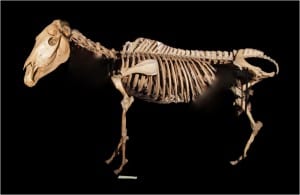Happy 132nd Quagga Day! It’s been a good year for quaggas
By Jack Ashby, on 12 August 2015
132 years ago today, 12th August 1883, the last quagga died, alone in her cage at Amsterdam Zoo.
The celebration/commeration of Quagga Day has become annual fixture at the Grant Museum, as we are one of only six or seven institutions worldwide to care for a quagga skeleton.
As such, we have written a lot about quaggas on this blog, and I won’t go into detail explaining what a quagga is, but for the uninitiated quaggas were a not very stripy kind of zebra that were hunted to extinction in their native South Africa for their unusual skins and as they competed with livestock for grazing grass.
Quaggas, we argue, are the rarest skeleton in the world, and we see our role at the Grant Museum as being global quagga champions.
For the first time in perhaps 132 years, I’m pleased to annouce that 2015 has been a very good year for quaggas.
 Close
Close




